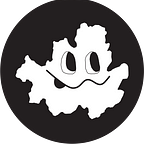Read/Write Offline Mapping: Technical Notes
Previously: Artist’s note
E Roon Kang, Wonyoung So
Read/Write Offline Mapping, facilitated by Dan Phiffer, had two conceptual goals that are stated in the workshop title. “Read/Write” emphasizes the role of users not only as consumers of maps but also as producers who participate in the creating/editing process of maps. Therefore, the workshop was set up in a way that allows participants to experience the whole process of defining their plan, gathering data, adding the data to a digital mapping platform and sharing it.
“Offline” mapping may sound contradictory, considering the fact that one needs network connection in order to share the digital map in question. Phiffer’s aim here was to create a map that can be shared in a local network, without being connected to the broader internet. Digital maps with such a limited connection are sometimes used to assist humanitarian field activities in disaster areas, where network connection is unstable. In the context of Seoul, South Korea, where open mapping is scarcely discussed or practiced and almost all mapping needs rely on a couple of services provided by big companies, a workshop on offline mapping is a thought experiment on what happens when we cannot rely on the big companies.
For the workshop, Phiffer created a server which operates on the structure of his ongoing work, occupy.here — a linux-running wifi router disconnected from the internet, that offers exactly one website accessible only to people on the wifi network. In addition, he drew inspiration from POSM, an offline mapping tool used by projects including Humanitarian OpenStreetMap, to develop a web service that allows collaborative mapping among people on the network. Data tiles of Seoul were downloaded from OpenStreetMap (OSM) to serve as basemap upon which participants can add their own contribution.
Some of the participants’ contributions fit right into OSM’s database, while others do not. For example, a map of public parking lots in Seoul represents currently accessible places in the city; this data would be accepted in OSM with no problem. On the other hand, the work of participants who chose to work with more private stories might not be welcome in OSM’s database, considering the latter focuses on currently existing geospatial entities. The question of what data should be saved and shared is a big interest to creators of web-based maps who work with open data. Is a data worth sharing if it was retrieved from personal memories, or if it consists of locations that only make sense to me and my friends? What would a database of such personal places look like?
A blueprint of personal data archives might be found in Who’s On First (WOF), a project maintained by Mapzen. Simply put, WOF collects location data. As the word “gazetteer” — as opposed to a provider of some absolute information — used by the project to describe itself alludes to, an interesting characteristic of WOF is that its database collects locations whether or not the place currently exists. Multiple interpretations and diverse information can be entered with regards to a single location; one can see that the database’s structure borrows from linked data, which uses relations among data in order to structuralize its characteristics. Korean locations can be added to WOF’s Github repository for Korean data, and one can explore the data using tools such as Spelunker. By engaging more actively with libre mapping activities — collecting data, structuralizing the data, encouraging others to reuse it — we can expect that more diverse maps will be created.
Translated from Korean by Achim Koh
